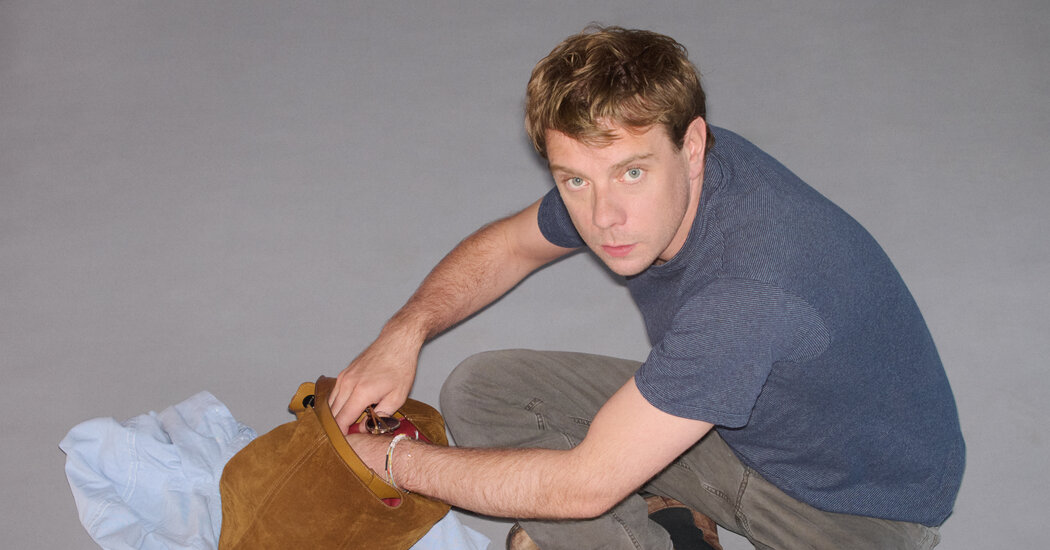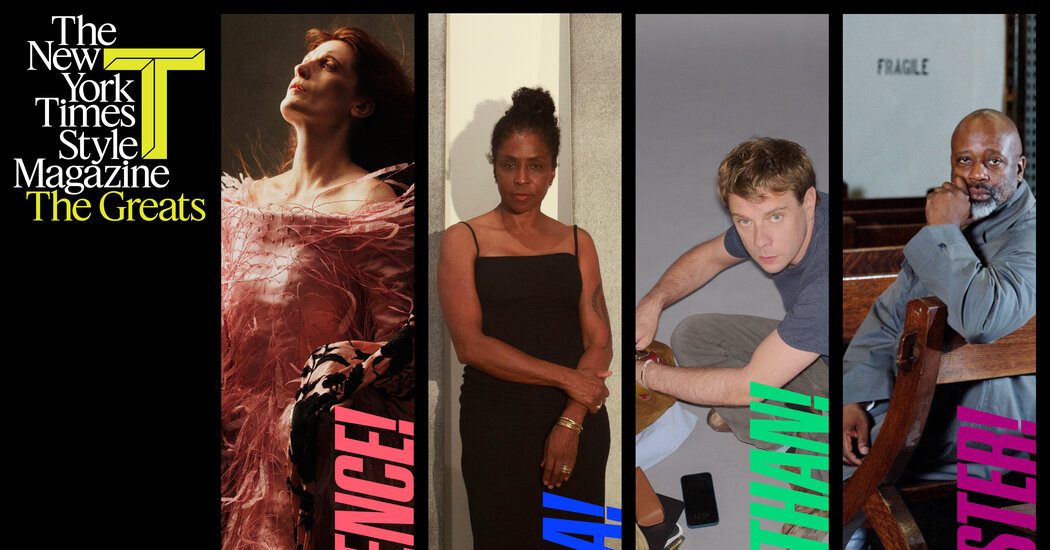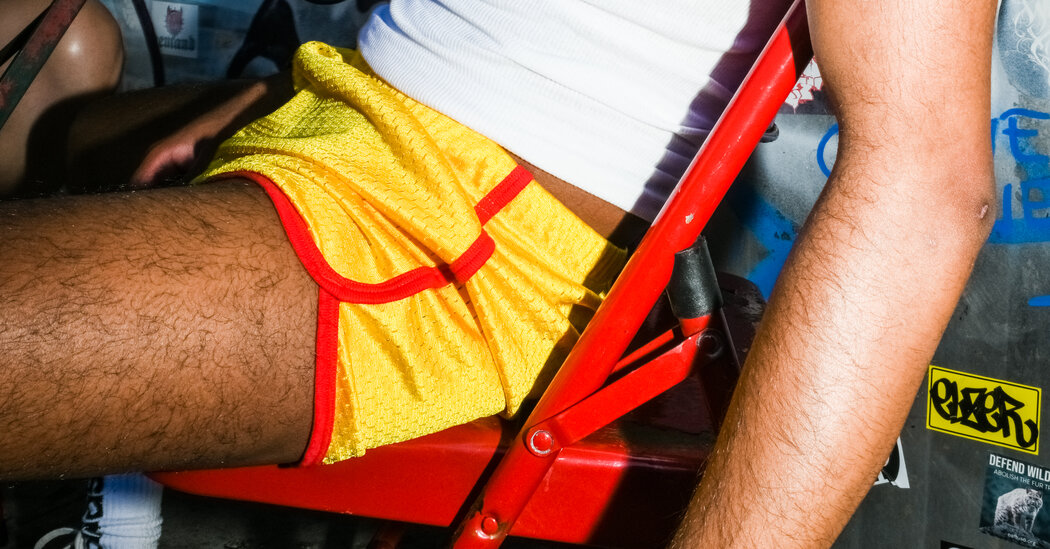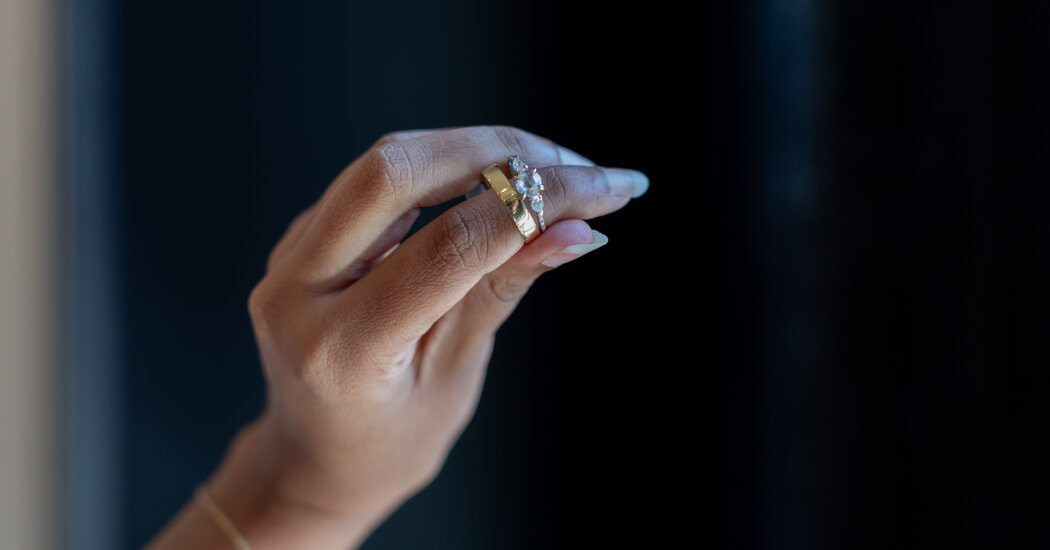For many, an umbrella may seem a pedestrian, often disposable object.
Not so for the umbrella maker Carlo Suino, 60, who believes an umbrella should not only last a lifetime but should also reflect the personality of its owner.
“It’s a bit like a business card,” Mr. Suino said on a recent cloudless morning in his curiosity-filled shop on Turin’s narrow Via Sesia.
“I have an umbrella that says I’m an exuberant person, or I’m a person who loves elegance, that I’m a very classic person, or that I’m crazy,” said Mr. Suino, whose offerings are meticulously handcrafted according to his clients’ build, tastes and habits.
Mr. Suino has umbrella making in his blood: He is the fifth generation of his family to make umbrellas, starting with his great-great-grandfather Bernardo, who left Corio, a mountain village, in 1890 and headed to Turin in search of work. As a child, he sometimes slept in the fabric cuts on the floor of his grandfather’s workshop, Mr. Suino said. At age 10, he began learning the craft for pocket money, and at 15, he could assemble an umbrella.
Now, as the owner and sole employee of Ombrellificio Torinese, the company his grandfather, Carlo, founded in 1931, much of Mr. Suino’s work uses the knowledge and experience handed down from generation to generation. But “the main objective is to have a product that is always better than the one made previously,” he said.
Innovations include computer-aided embroidery of complex images and lines of text, for example. There is also a potential collaboration — although he is only at the feasibility testing stage, Mr. Suino said — with two inventive young companies that produce sustainable textiles: Orange Fiber, makers of fabric from citrus waste, and Fili Pari, whose material incorporates powdered marble. (At present, the large, colorful bolts and smaller folded cuts of water-resistant, often polyester-blend material that fill his shop are sourced from the only two remaining Italian weaving mills specializing in umbrella fabric, he said.)
Among Mr. Suino’s more unusual creations are those for Arturo Brachetti, an Italian quick-change artist currently on a European tour with a large black umbrella made by Mr. Suino, which has been adapted to release a puff of smoke.
In Italy, very few people now can repair, make, or give serious advice about, umbrellas, Mr. Brachetti said by phone from his home in Turin. Here, “he’s the only one left,” the performer said of Mr. Suino. “He’s very precious for my work.”
At the planning stage, Mr. Suino will typically spend an hour with a client, deciding the 50 details that will go into an umbrella. Decisions include which thread color and the style and finish of an umbrella’s “tips” — the canopy’s protective metal ends. Larger concerns determine fabric, size — eight or 10 panels measuring about 18 to 26 inches from the center to the tip of the rib — and the handle. Handle options include butter-soft woods and roots; hand-carved ducks, eagles and toucans; and a one-of-a-kind selection of hollow resin handles filled with whimsical items, including curls of blue and white paper depicting a small white boat on an azure sea.
Work begins with cutting, said Mr. Suino, who unrolled a bolt of gleaming plum-colored fabric across a cutting board on the shop’s expansive counter to demonstrate. Placing a triangular clear-plastic “model” on the fabric, Mr. Suino cut around its edges with a manual rotary cutter to create a panel known as a gore. (For the tartan fabrics that are his specialty, the cut must be meticulously pattern-matched within half a millimeter, said Mr. Suino, who added that he could not bear to see an umbrella with mismatched lines.)
Production continues in a long room across a wisteria-shaded courtyard behind Mr. Suino’s shop. This workshop is divided into areas for the sewing and carpentry sides of his job.
In the shadow of the floor-to-ceiling industrial shelves, packed with a kaleidoscope of bobbins wrapped in colorful cotton and rolls of patterned ribbons, Mr. Suino sews the gores together on a decades-old Pfaff sewing machine to create a canopy. Then he embroiders and hems the material before hand-stitching the umbrella’s tips to its edges.
Next he connects the umbrella’s frame made of “ribs” and “stretchers” to its wooden shaft. Winding a thin wire around the metal ring that runs along the shaft to open and close the umbrella, Mr. Suino threads the hole at the end of each stretcher through the wire and twists it shut with pliers. He then repeats the operation to attach the ribs to what’s called the top notch (another metal ring near the top of the shaft).The frame complete, Mr. Suino will attach the canopy, pulling the tips taut over the ends of each rib and hand stitching the fabric at two or three points along each rib to the frame.
There are around 35 steps from start to finish, Mr. Suino said, with many umbrellas taking as long as 12 hours to create. Once finished, all are numbered and their details recorded on an index card so they can be remade precisely should a client leave one on a train, he said.
Each umbrella typically sells for between 120 and 250 euros, or $131 to $273. There are exceptions: He once made an umbrella for a collector, working on it for eight hours a day for a month. The €300 umbrella had a chestnut shaft, usable as a walking stick, and a handle that unscrewed to reveal a storage space for either a flashlight, a cigarette lighter, mosquito repellent or a knife (all supplied).
He keeps a selection of vintage umbrellas and parasols on display in an alcove. He removed one, unscrewed the end of its handle, and showed a visitor a dagger hidden inside.
On the shop’s long counter lay a large, emerald-colored umbrella completed only the day before. “Look,” Mr. Suino said, turning it to reveal a brilliant blue interior. The wooden handle was made from the gnarled root of a broom plant, he said. Embroidered on its canopy in royal blue thread were the words “Nero Apota.” The phrase made no sense to him, but it had meaning for the client, he said.
He also offers some umbrellas in his online store. Among them is a Scottish tartan model for €221, with a single, heat-bent, smoked maple shaft; and the Black Bond for €164, a Malacca-handled English-style umbrella (undecorated, strictly functional and slightly more curved with a tight-fitting lining).
In recognition of his work, Mr. Suino received the Master of Arts and Crafts Award in 2022 from the Milan nonprofit Cologni Foundation for the Métiers d’Art in the rare-métier category — the Italian equivalent of the Living National Treasure designation in Japan. Winners must fulfill 11 criteria, including creativity, savoir faire and innovation, Alberto Cavalli, the foundation’s general director, said in a recent video interview.
Mr. Suino fulfilled them all, with one addition, Mr. Cavalli said: Passion.
His umbrellas are “something precious,” Mr. Cavalli said. “Once you feel and touch this quality, then it’s hard to go back to the 5-euro umbrella that you throw away.”







